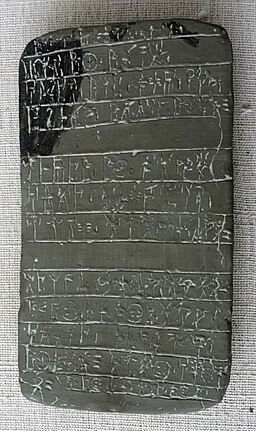 |
| Copy of a Linear B tablet Photo by Fæ [CC-BY-SA-3.0], via Wikimedia Commons |
So what does this mean? People in Mycenaean Greece weren't as cut and dried as we thought. It wasn't just the Haves and the Haves-Nots. And it wasn't The Palace, and everyone else as tenants. There's evidence of men taking on the roles of Smith, Shepherd, and Land Owner -- perhaps not personally going out and herding the goats, or tilling the fields, but rather as taking responsibility for those tasks and delegating or overseeing the work as done by others. Contracted by the Palace, and subcontracting to whoever is below him on the totem pole. And the assumption that Smithing was some kind of manual labor done by peasant-level citizens is also challenged. Smithing in particular may well have been a skill which PROVIDED status, or at the very least allowed someone to move up the ladder into a local-elite position.
Basically it all boils down to this one, seemingly common-sense framework: People who are mentioned a whole bunch of times across a variety of tablets and related to a multitude of roles are probably more important than people who are mentioned a handful of times, and those people in turn are probably more important than the people mentioned just once or twice, which creates a scale of importance far more complex than simply PALACE ELITE and PEASANT. In fact, it creates a middle class, full of private landowners, private flock owners, private merchants, private artisans, and presents an argument for relationships between these people of LOCAL importance and the Palace which are far more interesting than we previously thought.
It seems like such a simple thing, but its funny how those simple things can be so overlooked for so long!

No comments:
Post a Comment